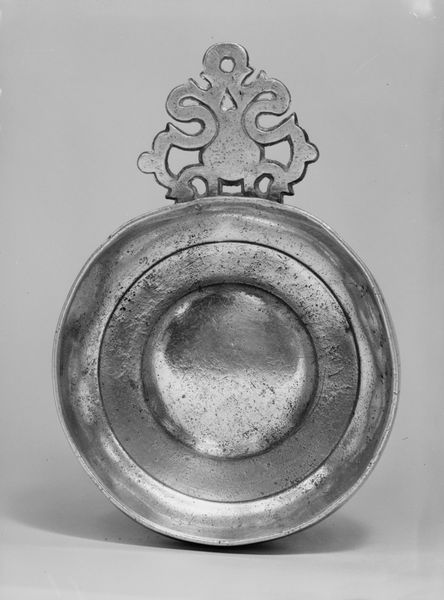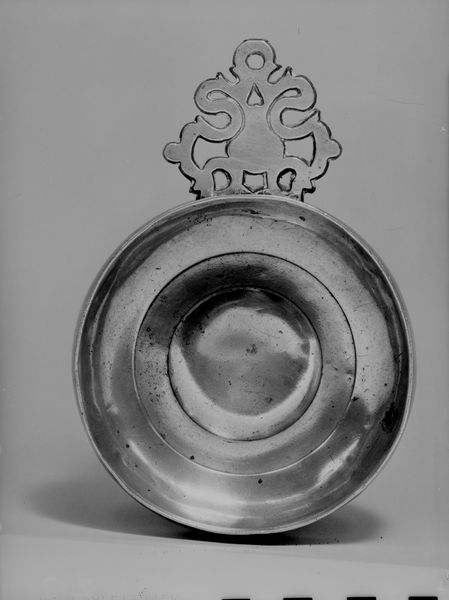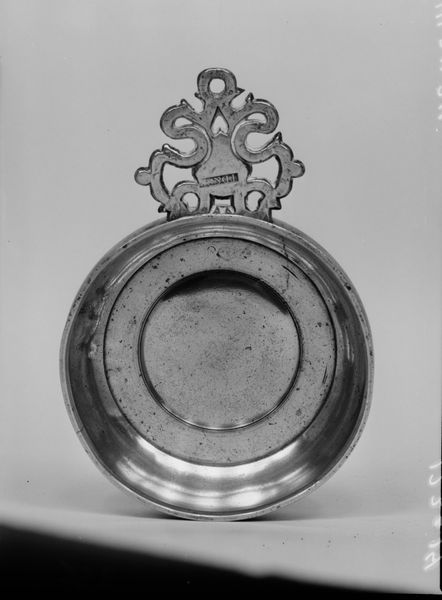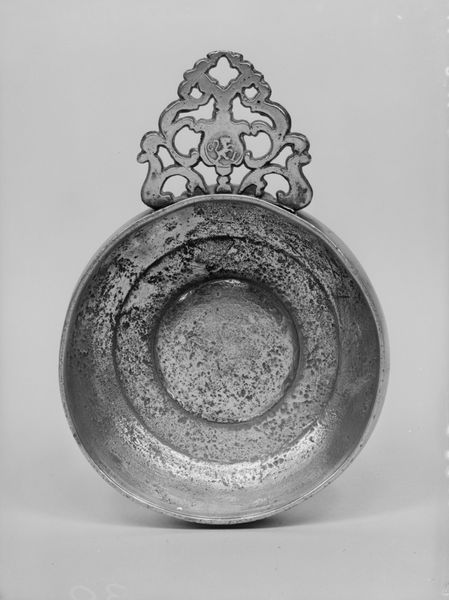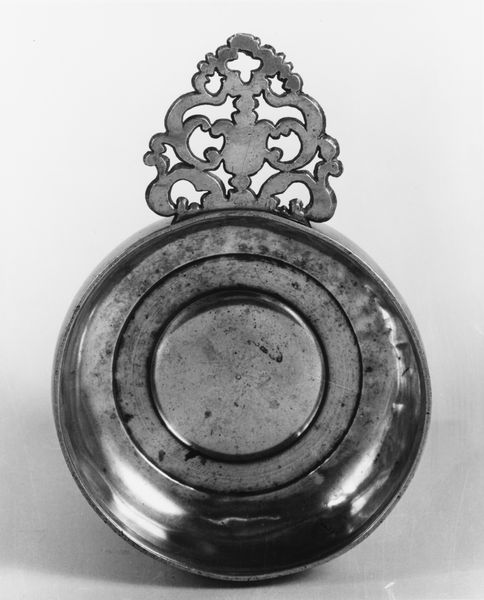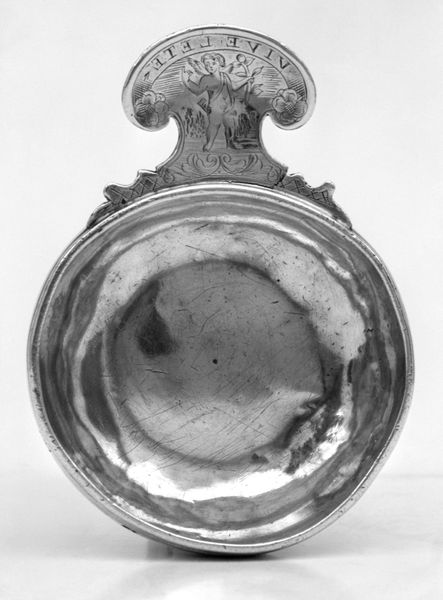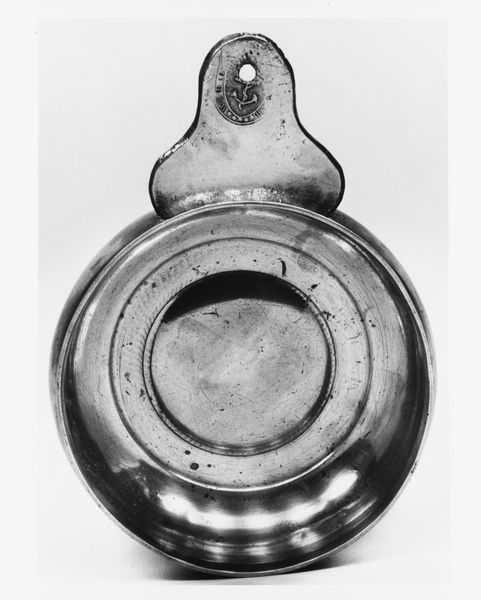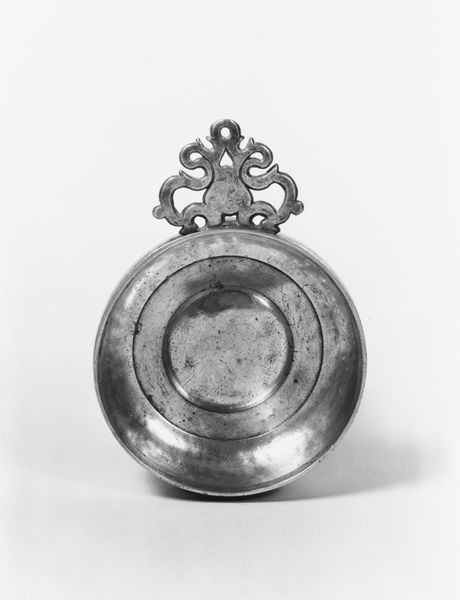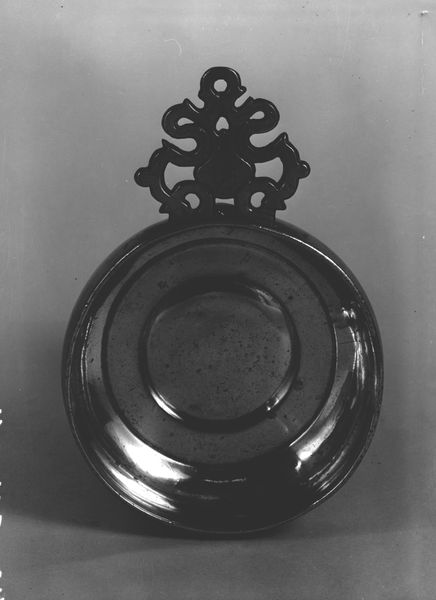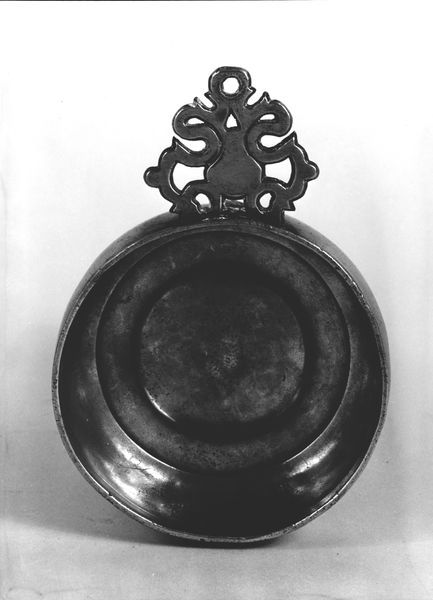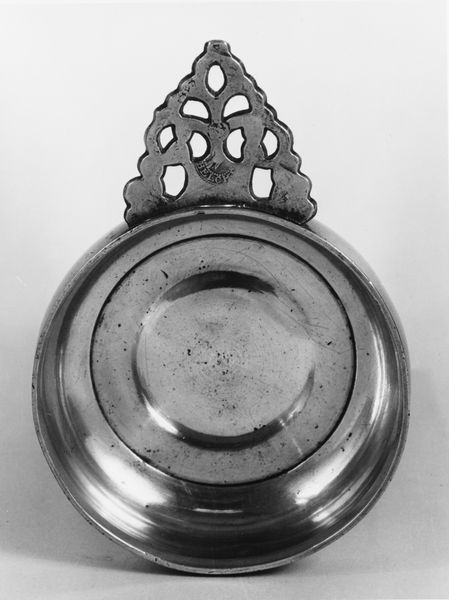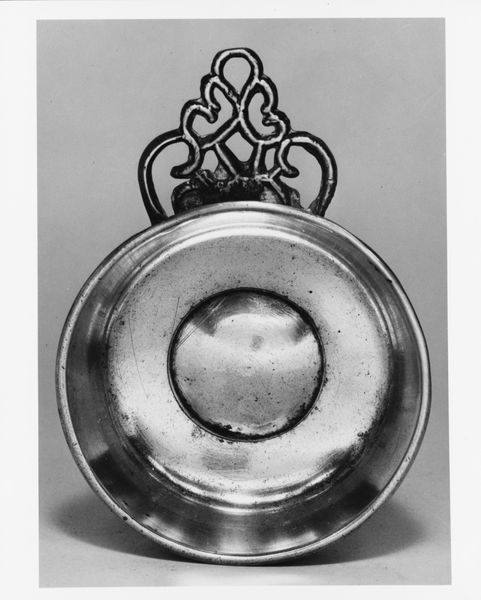
silver, metal, relief
#
silver
#
metal
#
relief
#
stoneware
#
decorative-art
Dimensions: 1 1/4 x 5 x 3 1/4 in. (3.2 x 12.7 x 8.3 cm)
Copyright: Public Domain
Editor: So, here we have a Porringer, crafted from silver sometime between 1788 and 1816, now residing at the Metropolitan Museum of Art. The elaborate handle suggests it was made for someone of considerable status, but the wear also speaks to utilitarian use. What does this piece evoke for you? Curator: This Porringer is not simply a vessel; it's a repository of stories about class, labor, and identity in the late 18th and early 19th centuries. Silver, a precious metal, speaks to wealth and privilege, yet its function is intimately tied to domestic life, possibly childhood. Who crafted this, and under what conditions? The maker's mark, Richard Lee, can act as an invitation for exploration of artisan life. What societal systems enabled Richard Lee's access to precious material and specialized training? Editor: I didn't consider that the maker would be an entryway to analyzing society. It prompts a shift in perspective. How would people from that period perceive such an item versus our contemporary gaze? Curator: They might see it as a symbol of upward mobility, an aspiration, while we can investigate how such aspirations intersect with race, gender, and labor dynamics. Were women and enslaved people involved in the mining or the manufacturing of the piece? Considering its existence within global systems, could the silver have come from colonized lands? Editor: That's fascinating. I’m struck by how a single object can serve as a launchpad for broader discussions about history, labor, and even colonialism. Curator: Precisely! Art objects like this aren’t neutral; they're actively shaping—and shaped by—social, political and economic power dynamics. Examining a Porringer as a tool of the status quo helps us contextualize how it served both practical purposes, like holding food, and ideological functions, conveying status, and privilege in ways still relevant today. Editor: It’s like excavating meaning. I now have more awareness about an object’s significance as both art and social commentary. Thanks for shedding light on these essential perspectives. Curator: Indeed. It is through inquiry and thoughtful reflection that we find meaning within art and history, to enable us to understand our present and strive for a more just future.
Comments
No comments
Be the first to comment and join the conversation on the ultimate creative platform.
